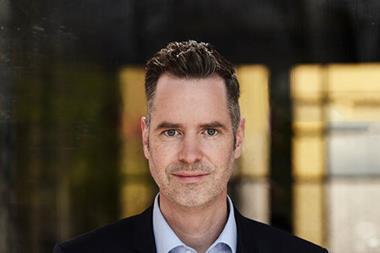It has been a bumper year for German investors so far. Global equities up about 16%, European equities a percentage point higher and even doughty European fixed income has returned 5%.
But in spite of the markets’ generosity, providers are still banging the drum for innovation. They fear that unless pensions investors diversify into new alpha-generating strategies, they may not fulfil their promise of benefits to owners and members.
“The fact of the matter is that for institutional investors it will become more and more difficult to comply with their commitments,” says Martin Scholz, managing director of Dresdnerbank Investment Management. He believes that investors must become more open-minded towards different kinds of innovation. In terms of asset classes these could be hedge funds, private equity, commodities or international real estate.
Investmentgesetz, last year’s new law covering institutional investments, ought to have facilitated such openness. Gone are the days when every foreign manager seeking to win business from investors in Germany had to establish a KAG. The new law ushered in a new era in Master-KAGs, to which clients contract on one side, and specialist managers on the other. Free of burdensome bureaucracy and expenditure on entities which are not part of the core business, foreign and domestic investment specialists ought to have been strengthened in their pursuit of business.
“From being one of the most restrictive investment regimes in the world, Germany became one of the most liberal,” comments Andrew Bosomworth, senior vice-president at PIMCO in Munich.
There was even talk of E15bn a year finding its way into hedge funds as a result of liberalisation.
Alas, enjoying the benefits of even 5% from European fixed income, their major asset class, means German institutions might calmly put to one side the hyperbole over diversification. The market trends of 2005 have made an excellent case for active currency management but this tends to fall under the aegis of fixed income mandates. Dresdnerbank IM’s own forecast for the next 12 months is for European fixed income markets to tend sideways, albeit at greater volatility, averaging 4-5%.
This sort of return is good enough for most institutions, which have yet to feel the changes wrought elsewhere in Europe by harsher regulation and explicit market valuations of pension liabilities.
Christian Wrede, chief executive officer of AXA Investment Managers for Germany, Switzerland and Austria, reckons that German institutions are still content with 4% from their majority fixed income holdings. He adds that for traditional, secure domestic investments, large investors are not going to require any specialist help.
“The big institutions are not going to use an external manager to buy Schuldscheine or 30-year bunds,” he says. Wrede sees specialist asset classes and strategies, including equities, accounting for just 20% of the largest investors’ portfolios.
The facts support the status quo. The Bundesbank’s August statistics for Spezialfonds reveal that E366bn of a total E561bn is invested in fixed income. Equities come next on E161bn but ‘other’ investments have attracted only E15bn. By August just E142m in three mandates had found their way into hedge funds. Twenty months since the doors were opened and no stampede. Just as fixed income has held up, so the index returns of hedge funds have not made a compelling case for buying these alternatives.
Commenting on the Bundesbank statistics, Hans-Jurgen Dannheisig, managing director of Frankfurt-based BHW Invest, says: “This shows that German institutional investors try to pursue alpha within the traditional asset classes by exploiting the possibility of the new law, Investmentgesetz.” He notes that the rules on derivatives especially set a good frame in using modern financial instruments.
A perfect example would be the technique of selling volatility. This has become a strategy made famous by the most adventurous of investors, hedge funds, now being exercised on the most dull securities, AAA-rated bonds.
The process seems well-suited to current conditions; Dresdnerbank IM predicts increased volatility in fixed income markets as investors buy on any news of a yield rise, creating undulation.
But selling volatility needs more than the right conditions. It is only now a buzzword among managers and consultants thanks to the new law and, specifically the liberalisation of the derivatives rule. Bosomworth, who heads up the specialist derivatives group for PIMCO in Munich, points out that until last year, investors had to hold back enough cash to cover any derivatives position in full. This highly conservative risk control hindered many strategies which rely on derivatives for their structure, even when the strategies are expected to yield small sums of alpha. PIMCO expects selling volatility to earn five-15 basis points annually -– which is perhaps where the departure from hedge funds occurs.
The technique, which is also being marketed by Goldman Sachs AM, is a matter of wringing alpha from structural inefficiencies and the comfort needs of other investors. It exploits other investors’ intolerance of strong changes in the value of their assets.
In other words, a seller of volatility acts rather like an insurer. The skill is to gauge the range of change one is willing to ‘insure’, which means comprehending not only the interrelation of interest rates and longer bonds but also their derivatives. No insurer likes to be overgenerous in offering protection.
The technicalities of setting a range involves selling a call - the right to buy - on the security at a rate of return lower than normal; and selling a put - the right to sell - on the security at a rate of return higher than normal.
If we imagine the security is mortgage-backed, it is easy to see who the buyers of volatility on the other side of the equation are. Ordinary homeowners are looking for the cheapest deal on their mortgage. It suits their purpose to enter into a loan when rates are low and be able to get out when rates are high. By selling volatility asset managers are facilitating homeowners’ freedom to choose. Of course banks, building societies and housing corporations can also offer this facility; the asset managers are merely providing a secondary market, taking some risk off of the direct lenders.
Daniel Phillipson, euro curve product manager at PIMCO Munich observes: “There are many more people willing to buy volatility than sell. It is a one-sided structure, giving the buyers the right to redeem early.”
PIMCO is a seller of volatility; it views the process as a structural inefficiency to be exploited and is reminiscent of the active currency manager’s argument that most participants in the money markets, such as central banks and multinational businesses, have other reasons for being there.
Viewed as part of a wider fixed income mandate, the attractions of the technique for German investors are obvious. It involves the kind of securities with which they are familiar. It promises a steady rather than an unbelievable return. It exploits markets in an obvious way that is likely to disappear only when too many participants become savvy of the technique, or a practitioner starts leveraging in order to magnify returns.
Crispin Lace, a senior investment consultant for Watson Wyatt in Germany and Nordic Europe, sees more of the same on the horizon. He believes there is now such a plethora of derivative contracts available on global markets that enable investors to exploit inefficiencies in whichever strategy they like, although the aim is simple. “Clients want more value from their bond portfolio. They are asking: ‘where can I obtain returns from?’”
Scholz also sees reliable improvements to the major fixed income portfolio as essential for the future: “It is inescapable to add further ‘structural alpha sources’ to the traditional income such as nominal interest rates and capital appreciation. By including these other strategies, portfolio diversification rises and what is most important for an institutional investor’s perspective in this context; this can be done without taking higher risks!”












No comments yet